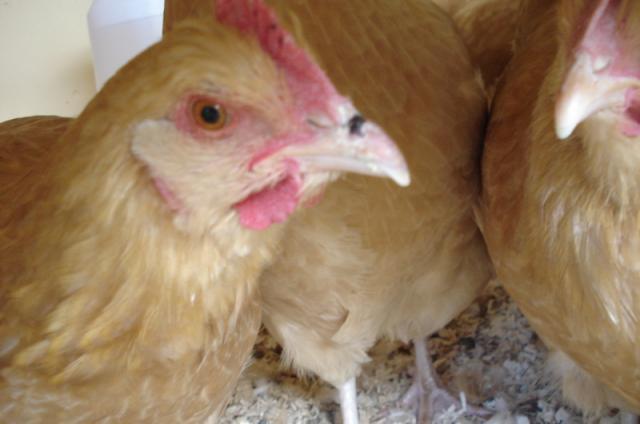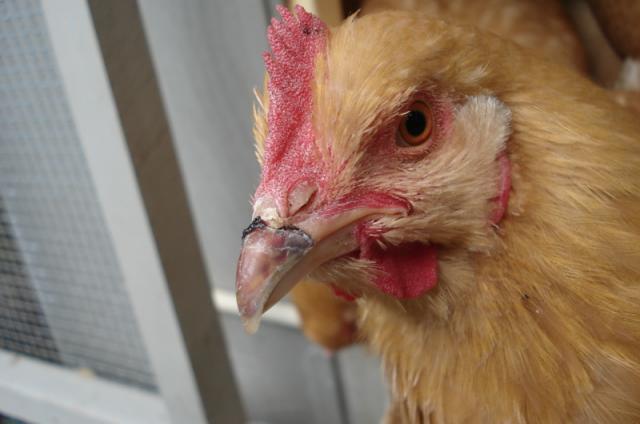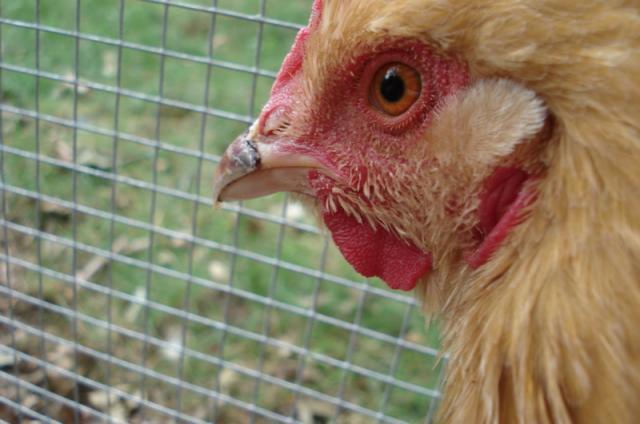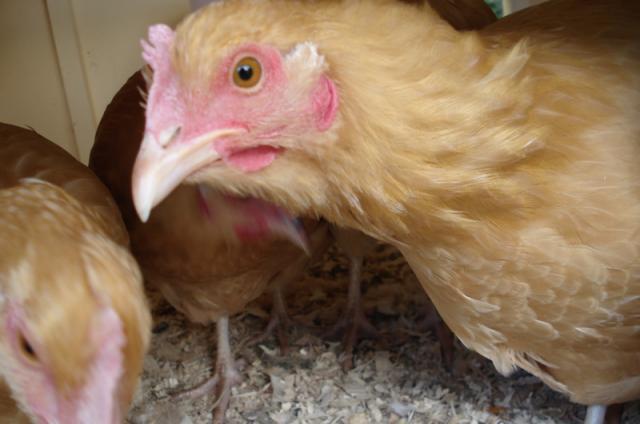- Aug 16, 2010
- 14
- 0
- 22
New chicken owner here.
My 4 20 week old Buff Orpington hens were in their tractor which was attached to the coop (so they can freely go in and out) when a roving neighborhood dog came into our yard, spotted the hens and started terrorizing them. I got out there quick as I could, but not before two hens had injured themselves. One hen had her wits about her and ran into the coop while the remaining three threw themselves against the sides of the tractor (wire mesh and wood) in terror. After I frightened the dog away I found two of the hens (Buttercup and Butterscotch) had cracked their beaks and were oozing blood.
I came on here to see what to do, and was going to put some flour on it, but when I got back outside the bleeding had stopped. I fed them a warm meal of steel cut oats (cooked plus some raw mixed with some yogurt and olive oil) and everyone was able to eat. I also added 1 T apple cider vinegar to their gallon of water, and made sure I cleaned out the waterer really well.
This morning, I made the same meal, but Buttercup (the more injured one, I think, it looks a little separated near her face) didn't eat, only pecked tentatively at it. The other injured one gobbled it down. I got some chick mash (the stuff I fed when they were babies) and Buttercup gobbled that right down. I'm thinking, as with me, Buttercup may be more sore today than right after it happened. Other than that, they look and are acting fine. Here are some pics of what they look like today.
Butterscotch:

Buttercup:


Chiffon (She's ok, just wanted her picture taken. The last hen, Kit is camera shy but ok):

Aside from venting and looking for moral support, I am wondering if there is anything more I should be doing, if there is something I should be watching for, or if anyone else has had their hens recover from a similar injury. I am planning on providing Buttercup with chick food until I see her able to go back to the grown up stuff. I may add a little yogurt and oil to it (thinking the protein and probiotics of the yogurt would be helpful and the extra calories from the oil would be helpful for healing and stress recovery).
Called the cops and Animal Control last night, and the dog is with Animal control now.
Thanks in advance for any support and advice.
Chris
My 4 20 week old Buff Orpington hens were in their tractor which was attached to the coop (so they can freely go in and out) when a roving neighborhood dog came into our yard, spotted the hens and started terrorizing them. I got out there quick as I could, but not before two hens had injured themselves. One hen had her wits about her and ran into the coop while the remaining three threw themselves against the sides of the tractor (wire mesh and wood) in terror. After I frightened the dog away I found two of the hens (Buttercup and Butterscotch) had cracked their beaks and were oozing blood.
I came on here to see what to do, and was going to put some flour on it, but when I got back outside the bleeding had stopped. I fed them a warm meal of steel cut oats (cooked plus some raw mixed with some yogurt and olive oil) and everyone was able to eat. I also added 1 T apple cider vinegar to their gallon of water, and made sure I cleaned out the waterer really well.
This morning, I made the same meal, but Buttercup (the more injured one, I think, it looks a little separated near her face) didn't eat, only pecked tentatively at it. The other injured one gobbled it down. I got some chick mash (the stuff I fed when they were babies) and Buttercup gobbled that right down. I'm thinking, as with me, Buttercup may be more sore today than right after it happened. Other than that, they look and are acting fine. Here are some pics of what they look like today.
Butterscotch:

Buttercup:


Chiffon (She's ok, just wanted her picture taken. The last hen, Kit is camera shy but ok):

Aside from venting and looking for moral support, I am wondering if there is anything more I should be doing, if there is something I should be watching for, or if anyone else has had their hens recover from a similar injury. I am planning on providing Buttercup with chick food until I see her able to go back to the grown up stuff. I may add a little yogurt and oil to it (thinking the protein and probiotics of the yogurt would be helpful and the extra calories from the oil would be helpful for healing and stress recovery).
Called the cops and Animal Control last night, and the dog is with Animal control now.
Thanks in advance for any support and advice.
Chris
